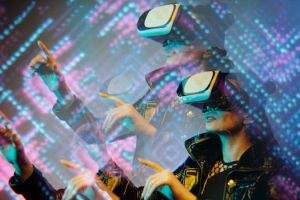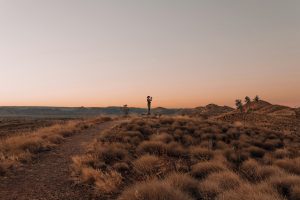Virtual Field Trips: Bringing Ancient Civilizations to Life With VR
As technology continues to advance, the educational landscape has undergone significant changes. No longer confined to traditional classroom settings, students now have access to a wide range of interactive learning experiences. One of the most exciting developments in this realm is the use of virtual reality (VR) in education, particularly in the form of virtual field trips. These VR-based excursions allow students to explore the world without ever leaving the comfort of their classrooms. In this article, we will delve deeper into the world of virtual field trips and how they are bringing ancient civilizations to life through the power of VR.
The Power of Virtual Field Trips
Traditional field trips have long been hailed as a valuable learning tool, providing students with hands-on experiences that deepen their understanding of various subjects. However, these trips are often limited by logistical constraints, such as distance, cost, and time. This is where virtual field trips step in to bridge the gap.
With VR technology, students are transported to distant and often inaccessible places, giving them the opportunity to explore ancient civilizations in a highly immersive and engaging manner. This not only enhances their learning but also expands their horizons and broadens their perspectives.
Exploring Ancient Civilizations Through VR
Ancient civilizations, such as the Egyptian, Roman, and Aztec empires, have long fascinated us with their rich history, culture, and architecture. However, for most students, these ancient worlds are merely words on a page or images in a textbook. This is where virtual field trips play a crucial role in bringing these civilizations to life.
Through VR, students can walk through the streets of ancient Rome, marvel at the pyramids of Giza, or wander through the temples of Machu Picchu. They can interact with historically accurate recreations of artifacts, buildings, and landscapes, gaining a deeper understanding of the culture and lifestyle of these ancient civilizations.
Interactive Learning Experience
In addition to visually transporting students to these distant worlds, VR also offers a highly interactive learning experience. Students can actively engage with the environment, manipulating and exploring objects and structures to gain a more comprehensive understanding of how they functioned. For example, students can use VR to explore the inner workings of a pyramid or the intricate designs of an Aztec temple.
Moreover, VR also allows students to dive deeper into specific topics or areas of interest through interactive activities and games. This not only makes learning more engaging but also allows for a more personalized learning experience tailored to each student’s needs and preferences.
The Benefits of Virtual Field Trips
The benefits of virtual field trips go beyond just bringing ancient civilizations to life. VR-based learning has been shown to improve retention, critical thinking, and problem-solving skills among students. Additionally, these experiences are accessible to students of all abilities, making learning more inclusive.
Virtual field trips also offer a cost-effective and sustainable alternative to traditional field trips. With the use of VR, students can experience multiple destinations without the need for transportation, accommodation, or other expenses associated with traditional trips.
The Future of Education
As the education system continues to evolve, virtual field trips will undoubtedly play a significant role in shaping the future of learning. The potential for VR in education is limitless, with the possibility of exploring not only ancient civilizations but also distant planets, underwater worlds, and other fascinating realms.
While virtual field trips should not entirely replace physical field trips, they do offer a valuable supplement to traditional learning methods. Through the power of VR, students can explore, experience and learn in ways that were once unimaginable, providing an exciting and immersive educational experience that is sure to leave a lasting impression.
In Conclusion
Virtual field trips have revolutionized the way we learn about ancient civilizations and hold immense potential for the future of education. By bringing these distant worlds to life through the power of VR, students can explore and interact with history in a way that was previously not possible. Therefore, it is safe to say that virtual field trips are undoubtedly a valuable tool that will continue to shape the education landscape for years to come.








